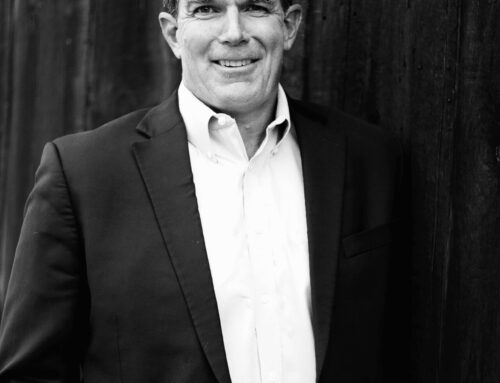The Role of Chief Medical Officer Has Evolved
Today’s CMO is a strategic partner positioned to effect system-wide change.
By Roki Chauhan, M.D.
Recently, I read an article from McKinsey & Company titled “The Rapid Evolution of the Payer Chief Medical Officer.”[1] The authors make the case that, as health plans have changed their focus, from managing risk to coordinating value-based healthcare, the role of the CMO has evolved from physician executive to strategic business leader. Anyone contemplating the job of CMO and any organization looking to hire the best candidate for that position should find the piece well worth their time.
The article got me thinking about my own career path and experiences as a CMO. After fifteen years as a board-certified family physician, I left clinical practice to become an associate medical director at a small health plan in the Pacific Northwest. A few years later, I joined a larger organization, where I served as a physician executive for fifteen years, the last six as Chief Medical Officer.
The job excited me. As a practicing physician, I was frustrated by the fact that there was no accurate method of tracking and monitoring patients with chronic disease. This prompted me to go where the data were, which at that time was at health plans. I was determined to find a way to collect and use data and analytics to improve care. Though I missed the interpersonal relationships I’d had with patients, I didn’t miss the administrative burdens, and I relished the chance to effect substantive change. That’s what inspired me to become a CMO.
[1] Omar Kattan, MD; Fatima Paruk, MD; Thomas Santo, MD; and Jordan VanLare, MD, “The Rapid Evolution of the Payer Chief Medical Officer,” 26 March 2021, McKinsey & Company.
What the Job Demands
As we all know, healthcare in the U.S. is a complex adaptive system that asks anyone who wants to deliver quality care, physician and nonmedical leader alike, to frequently shift gears. A physician who wants to become an effective CMO must be agile, knowledgeable, and responsive: the definition of a strategic thinker.
A Foundation in Clinical Practice
Time spent in clinical practice gives the future CMO experience with patients and in-depth knowledge of the industry. In clinical practice, a physician learns the business of medicine: the ever-changing requirements, rules, and regulations. As a CMO, that physician is well prepared to keep abreast of seemingly endless payment reforms while maintaining empathy for patients—an advantage when it comes to partnering with the nonclinical C-suite.
The Right Stuff
Frequently, the future CMO’s first nonclinical position is as the medical director of a health plan. That’s where I learned the basics: quality, medical policy, utilization management, fraud and abuse, credentialing of providers, and state and national regulatory requirements, such as those set by the Center for Medicare & Medicaid Services (CMS) and the Employment Retirement Income Security Act (ERISA). The learning curve in my first few years at this job was almost as steep as it had been in medical school.
It’s been my experience that physicians with broad primary-care background may have an advantage over subspecialty physicians. But what most matters is their being able to think tactically, and to grasp the ramifications of their team’s every action. Health plans are multifaceted organizations where big decisions are made. Treating an individual in an exam room or surgery suite is one thing—making determinations that impact thousands or millions of patients is another.
Is an MBA Necessary?
A master of business administration may give a CMO candidate a competitive edge, but it doesn’t guarantee that that candidate will be better at the job than those lacking the degree. Again, depth of experience and knowledge are essential, along with a track record of positive results. Flexibility counts, too—they must be prepared to shift from clinical practitioner to businessperson. Practicing doctors sometimes sound like know-it-alls. CMOs must support ideas by drawing on their knowledge and experience and, without being didactic, leading others to optimal solutions.
McKinsey & Company’s Job Description
The McKinsey article outlines the capabilities effective CMOs must have and the roles they must take:
- Operational leader
- Provider liaison
- Policy maven
- Digital and analytics translator
- Care-model innovator
- Business savant
- Persuasive communicator
The prerequisites for doing the job well can be developed in an MBA program, but that wasn’t my route. Instead, when I made the shift from clinical practice, I completed a yearlong fellowship in managed care through America’s Health Insurance Plans (AHIP). Taking leadership courses helped position me to become the CMO at a large health plan and, now, a medical advisor to several of today’s most innovative vendors of healthcare solutions. I didn’t chart my path to CMO; rather, I grew into the job and got good at it. I also believe that a mentor can speed up the process, but the requisite skills can be mastered only by learning from the successes and mistakes one makes on the job.
What I Learned on the Job
Having reflected on my journey from clinical physician to physician executive to CMO as strategic business partner, I offer this list of personal benchmarks. Along the way, I learned how to:
- Transition from clinical work to payer work to partnering with providers.
- Win over clinical colleagues who accused me of having gone to the “dark side.”
Later, they realized that I was their best advocate and could assist them with any issues or challenges they had with the health plan. I always worked to provide data that enabled them to better manage the care they offered.
- Work in complex systems within my organization, and eventually across the ever-changing entity that is our country’s healthcare system.
- Collaborate with noncompeting health plans to come up with solutions that let us accelerate processes within our own organization without reinventing the wheel.
I was fortunate to work for a Blue Cross Blue Shield plan, which gave me access to my counterparts at BCBS plans across the country.
- Address potential barriers to care by keeping in mind that the goal is to get people the healthcare they need. The challenges were, and are:
—Member concerns/frustrations and costs
—Provider concerns, administrative burdens, and payment
—Regional, state, and national regulatory requirements.
- Tackle uncertainty, from 9/11 to such natural disasters as hurricanes and storms, all of which impact healthcare (e.g., the ability to refill members’ prescriptions by mail when local pharmacies were shut down).
- Master the differing requirements and regulations for various organizations and businesses, including Medicare Advantage, Medicaid, fully insured and self-funded commercial organizations, as well as states and municipalities.
- Work with the multiple vendors who provided care-management tools and other healthcare solutions to health-plan members.
- Assess the clinical efficacy of solutions and financial business models that led to improved care and lower costs.
- Develop a network of forward-thinking clinical and business leaders who could champion strategic partnerships.
- Partner with the provider community to reach common goals, such as improving quality of care based on the accepted, standardized metrics.
My team and I paved the way toward the generation of payment reform that became value-based care or value-based payment. This began with quality scorecards for provider organizations, and led to public recognition of high-quality providers within given markets. We developed internal scorecards that were used at several practices in Washington State. I couldn’t have been more surprised or pleased when one large provider organization asked us to publish the results of this program on our website, even though that organization had not scored perfectly across all metrics.
- Shift my focus from that of a traditional health-insurance company CMO to that of a strategic business partner.
Several years ago, at a CMO roundtable of noncompeting organizations, the CMO of a large health system in California approached me. Recalling our conversation, I now realize that it reflected a major turning point: providers were beginning to see health plans as critical partners in the effort to improve healthcare in the U.S.
The McKinsey & Company article stresses this last competence: “clinical leadership is a differentiating factor for success. As such, payers who are quick to embrace the expanded priorities of the CMO as a strategic thought partner will achieve tangible bottom-line impact in the near term and build competitive differentiation in the long term.”
I agree with McKinsey: A successful CMO builds a sound team and determines sets of clinical metrics that improve members’ access to care and their health while increasing value for the health plan. Strategic CMOs use their competences to navigate their companies from within to influence the industry at large. With evolving payment models and advance information technology reshaping the ways healthcare is delivered in the U.S., collaboration within and among healthcare organizations is critical. Today’s strategic CMO makes this happen.
Coda
After reading the McKenzie article, I asked myself if the concept of CMO as strategic partner applies to a chief medical officer outside of a health plan. The answer was yes! Today’s progressive CMO can work for a health plan, a provider organization, an integrated delivery system, a healthcare vendor-solutions company, or a device manufacturer—and I’m sure I haven’t thought of every opportunity. These days, I use my skills and know-how to advise several healthcare-solutions vendors, all of whom share the goal of improving healthcare everywhere.
Roki Chauhan, MD, is Senior Medical Advisor at Leverage Health. Formerly Chief Medical Officer at Premera Blue Cross Blue Shield, he has worked at several other health plans.







Stay In Touch